2018 Maserati Levante Review

What is luxury without expression? Many automakers boast a wide variety of luxury cars, but few of them, especially utility vehicles, hit the right note in terms of personality and true desirability.
Sure, it’s cool to show off a new BMW or Porsche in your neighborhood because it shows the world that you’ve earned enough money (or made a good enough deal) to treat yourself to something nice, but it’s a pretty superficial statement if the vehicle doesn’t actually express who you are and how you feel.
It’s good then, that other, more passionate automakers like Maserati are slowly coming out with sexy alternatives to the status quo. The 2018 Maserati Levante not only looks expressive but drives that way, too. And beyond the stylish and technical bits, there’s also a lot of potential for driving joy.
Let’s start with the striking exterior design. It’s unmistakably a Maserati, which means it’s gorgeous and it can indeed sport porthole vents on its side fenders and get away with it. The long hood, scowl-like front end, and wheel arches help draw eyes, and while some will decry the rear end of the car as being bland, it’s plenty serviceable, considering this is a crossover. The side profile is its defining characteristic, as the Levante sports a slick silhouette that is much less utilitarian looking than anything from Range Rover and less frumpy than the Porsche Cayenne.
FAST FACTS
| Engine: | 3.0-L twin-turbo V6 |
| Output: | 424 hp, 428 lb-ft of torque |
| Transmission: | 8-Speed Automatic |
| US Fuel Economy (MPG): | 14 city, 19 hwy, 16 combined |
| CAN Fuel Economy (L/100 km): | 16.6 city, 12.2 hwy, 14.7 combined |
| US Starting Price: | $76,040 |
| CAN Starting Price: | $95,100 |
Beyond the Exterior
The exterior is eye-catching enough to warrant the price tag and the interior leaves a great first impression, too. Our GranLusso tester was outfitted with the optional super-swanky Ermenegildo Zegna Silk upholstery to go along with bright brown leather. GrandSport is the other trim level for the Levante and sadly doesn’t come with the same interior options. There’s some wood trim to help class up the place, but ultimately, this Levante offers a unique take on a cabin and is unlike anything I’ve seen in this class before. It’s also comfy — the seats offer support and are plush enough to handle a long road trip.
As I mentioned, it’s a great first impression – the folks in the front two seats will certainly feel pampered, and a pair of adults in the back will be OK as well, as there’s even an option for four-zone climate control and heated seats back there as well as powered window shades.
Interior Missteps
There are a few hiccups with the interior, however, but most are forgivable. A lot of the switchgear and controls are similar to what you may find in other FCA cars, including Jeeps and Alfa Romeos. It detracts a bit from the uniqueness of the Levante, but it will only bother car geeks who have been in many other cars before and can somehow identify where a window or ignition switch came from. The shifter requires patience as well: it’s an electronic unit that springs back to center after you use it and doesn’t provide much feedback, meaning you can throw the car in park when you wanted to get into reverse or vice versa. It can be frustrating.
Finally, the Levante has 19.4 cubic feet in the trunk, which expands to 57.3 cubic feet with the seats down. It’s down compared to some rivals but passenger space is slightly more than in a BMW X5, so it’s got some practicality to offer.
Tech and Features
What’s far from frustrating is the “Maserati Touch Control +” infotainment system — while I made the comment about the switchgear being from other FCA products, that’s more than acceptable if it means the UConnect-based touchscreen infotainment system comes along for the ride. Quick to respond and easy to use with a lot of customizable settings, it’s a standout in the industry. The “+” part of the equation is the rotary knob for controlling the system as well, which has a volume knob on top of it. It’s a clever design that helps clean up the cabin. The system has Android Auto and Apple CarPlay support, which should satisfy the connected crowd, and there are two optional upgrades to the audio system, topping out with the powerful Bowers and Wilkins sound system with over 1,200 watts of output and the Clar-Fi feature that helps clean up compressed audio files like MP3s.
The Levante has a nearly never-ending list of features like heated and vented seats, a heated steering wheel, rain sensing wipers, power tailgate, and a panoramic sunroof to name a few.
Ferrari Influences
There are a few buttons to help adjust the driving character of the car and you’ll want to change them up often, as the drive is one of the more involving parts of the car. It’s a blast as soon as you trigger the push-button ignition and the engine boils over, bubbling and burbling with an intoxicating growl. That growl is further enhanced when the car is switched into one of the two sports modes, and it goes from a bark to a roar between 3,000 rpm to the 6,500 rpm redline. It’s addicting, exhilarating, and downright intoxicating.
The Levante begs to be driven in sport mode so you can hear that Ferrari-made 3.0-liter turbocharged six-cylinder engine scream and shout Maserati’s distinct soundtrack through the specially tuned exhaust system. Like the interior, it’s a unique experience, one that sets the car apart from others in its class. There’s no denying that Ferrari builds and designs some serious hardware, and to have that kind of pedigree under the hood of a utility vehicle is more than a gimmick.
The power delivery is satisfying, mainly due to the accompanying soundtrack. In S guise, the engine makes 424 horsepower and 428 lb-ft of torque. Depending on the mode, peak figures can arrive early at 1,750 rpm in sport mode, or comes right after 4,500 rpm in the normal mode. A less powerful motor is found in the non-S Levante, packing 345 horsepower and 369 lb-ft of torque.
ALSO SEE: A Second Maserati SUV is in the Works
Mated to the engine is an eight-speed transmission that’s plenty responsive and quick to change gears when needed. A giant pair of column-mounted paddle shifters is found behind the steering wheel, which works nicely with the manual mode, allowing you to trigger gear changes whenever you see fit. Like the rest of the powertrain, they’re satisfying to use.
Spritely AWD
Being a utility vehicle, this model packs an all-wheel-drive system, and this being a Maserati, that system favors the rear wheels. It helps balance the weight distribution of the car to a perfect 50/50 ratio. That system also allows for 50 percent of the power to go to the front axle, and it can make that transfer in 150 milliseconds. There’s a mechanical limited-slip differential that helps the Levante carve corners convincingly. It’s not easy with the Levante weighing over 4,600 lbs, but the Maserati feels light on its feet, hitting highway speeds in about 5 seconds.
SUV Suspension and Surprises
On windy roads, it’s hard to ignore the size and weight of the car, so don’t expect an SUV to be a sports car, even if it has a Maserati badge, but it is surprisingly fun to drive, thanks to an engaging feel in almost every aspect of the car. There’s a fancy suspension system called Skyhook, which sounds like it would have its own soundtrack as well, but it just works silently in the background, swapping between two settings. The main setting is comfort-oriented and a bit too floaty, but perfect for a highway sprint. The sport suspension setting is stiffer and brings Maserati’s sports car and racing know-how into the mix. There’s limited body roll and to help things even further, the Levante features an air-suspension system that can raise the car for more off-road prowess, or lower it for better aerodynamics. It also lowers for easier entry and exit.
On the open road, the car feels solid, confident and easy to drive, but make no mistake, it is a big car. Big Brembo brakes are found as standard equipment on the S model, and they do a convincing job of slowing the car down. There’s a new electric power-assisted steering system, replacing a hydraulic unit, which is supposed to be simpler and lighter. It can filter out imperfections and can help the car feel light in low-speed settings, and heavy and confident at high speeds. In case the car feels a bit too big in small spaces, there are a few parking sensors to help with the goal of navigating it and a rear-view and surround view camera as well.
New Advanced Driver Assistance System
The new system also allows for tight integration with the new driver assistance features. Maserati says the car can manage Level 2, semi-autonomous driving. That means the driver’s hands have to be on the wheel. There’s highway assist that works well with the adaptive cruise control that can keep the car in the middle of the laneway and also maneuvers the car in some curves on the road. There’s also a lane change system that works with the blind-spot monitoring to help drivers from inadvertently changing lanes into another vehicle.
It starts at $76,040 ($95,100 CAD) for a base model, but Maserati buyers are probably not interested in such a vehicle. You can option out the car in every possible way, and each item on the list adds more bills to the bottom line.
The Verdict: 2018 Maserati Levante Review
The Levante is a gorgeous vehicle that’s full of surprises and expressive, thanks to the soundtrack and powertrain. The SUV is full of new technology that brings the vehicle up to speed with some of its competitors. It has a few hiccups, but everything is forgiven once you hear that exhaust note when you put your foot down. With so many bland utility vehicles with no personality, the Levante is a breath of fresh air.
LOVE IT
- Amazing sound
- Unique upholstery
- Infotainment system
- Advanced Driver Assistance
LEAVE IT
- Heavy
- Not very spacious
- Weird shifter

Sami has an unquenchable thirst for car knowledge and has been at AutoGuide for the past six years. He has a degree in journalism and media studies from the University of Guelph-Humber in Toronto and has won multiple journalism awards from the Automotive Journalist Association of Canada. Sami is also on the jury for the World Car Awards.
More by Sami Haj-Assaad



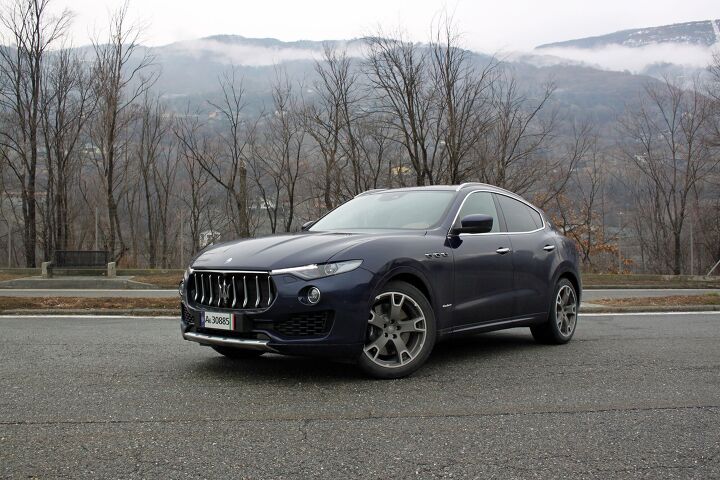

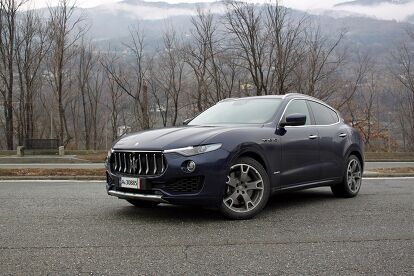












































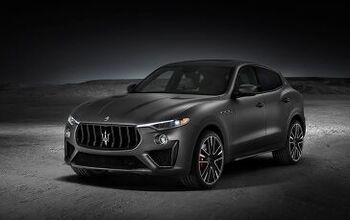






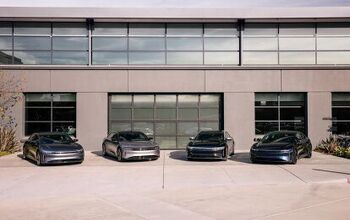
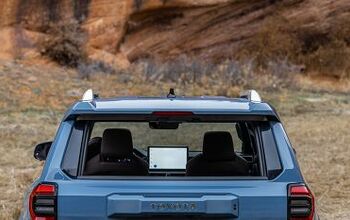






Comments
Join the conversation
What happened to 650 hp